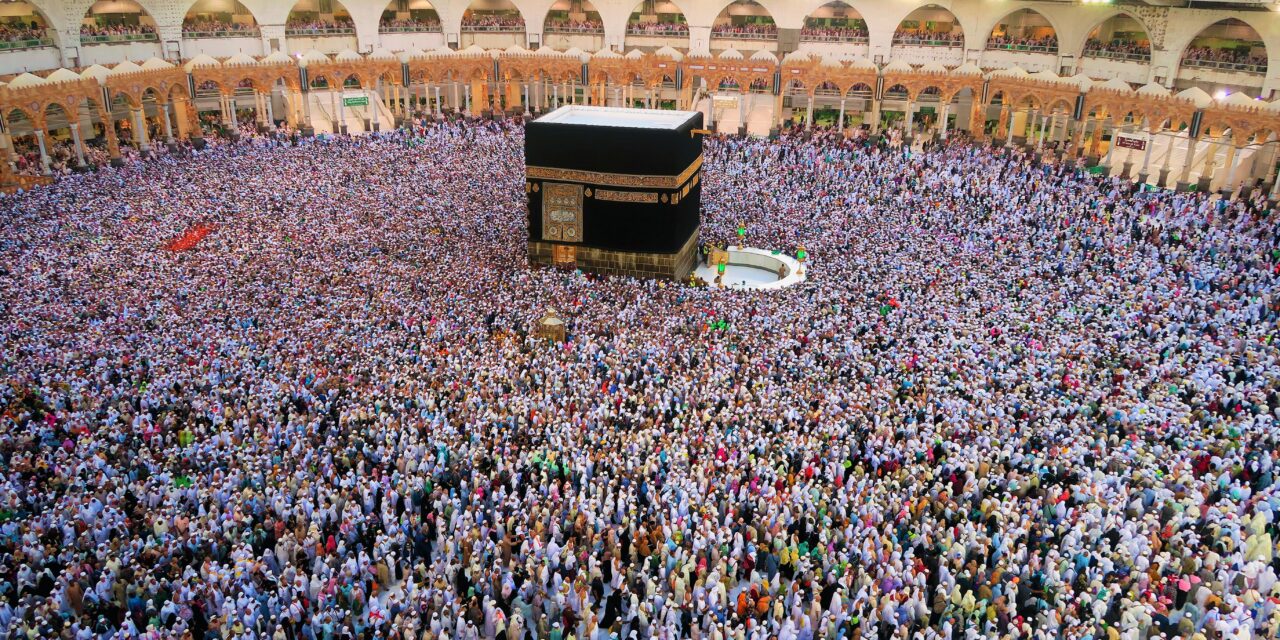The Hajj is a pilgrimage to the holy city of Mecca that is required of all able-bodied Muslims who can afford it. It is one of the Five Pillars of Islam, and it is a once in a lifetime obligation for every Muslim. The Hajj is performed during the Islamic month of Dhu al-Hijjah and takes place over several days. It is a physical and spiritual journey that is meant to bring Muslims closer to Allah and to renew their faith.
The journey of Hajj begins with the intention, or the “niyyah,” to perform the Hajj. Muslims should make the intention to perform the Hajj in their hearts, and it is recommended to verbally express it as well.
The first stop on the Hajj journey is the city of Mecca, where Muslims must perform the “Umrah,” a minor pilgrimage that can be performed at any time of the year. This includes the Tawaf, which is the circumambulation of the Kaaba, and the Sa’i, which is the walk between the hills of Safa and Marwa.
After the Umrah, Muslims then proceed to the city of Mina, which is located about 5 kilometers east of Mecca. Here, they will spend the night in tents and prepare for the next day’s events.
On the 8th day of Dhu al-Hijjah, the Hajj officially begins. Muslims will make their way to the plain of Arafat, which is about 20 kilometers east of Mecca. This is the most important part of the Hajj, as it is here that Muslims will stand before Allah and seek His forgiveness. This is known as the “Standing” or “Wuquf” and it is said that the Hajj is not complete without it.
After the Standing, Muslims will then proceed to the plain of Muzdalifah, which is located between Arafat and Mina. Here, they will gather pebbles for the next day’s event, the “Stoning of the Devil” or the “Ramy al-Jamarat.”
On the 9th day of Dhu al-Hijjah, Muslims will return to Mina and stone the devil at the “Jamarat,” which are three stone pillars representing the devil. This symbolizes the rejection of Satan’s temptations and the reaffirmation of one’s faith in Allah.
Following the stoning, Muslims will then perform the “Tawaf al-Ifadah,” which is the final circumambulation of the Kaaba. This is followed by the “Halq” or “Taqsir,” which is the cutting of the hair or shaving of the head, symbolizing the completion of the Hajj and the end of the state of ihram.
After the completion of the Hajj, Muslims will then return to Mecca and perform the “Umrah” again, and then return to their homes.
The Hajj is a physically and mentally demanding journey, but it is one that is deeply spiritual and meaningful for Muslims. It is a time for reflection, for seeking forgiveness, and for reaffirming one’s faith in Allah. It is a journey that brings Muslims from all over the world together, united in their love and devotion to Allah.
In conclusion, Hajj is a once in a lifetime obligation for every muslim and it is one of the Five Pillars of Islam. It is a journey that brings muslims closer to Allah, and it is a time for reflection, for seeking forgiveness, and for reaffirming one’s faith in Allah. The Hajj journey starts with the intention of performing the Hajj and then goes on to the Umrah, Mina, Arafat


